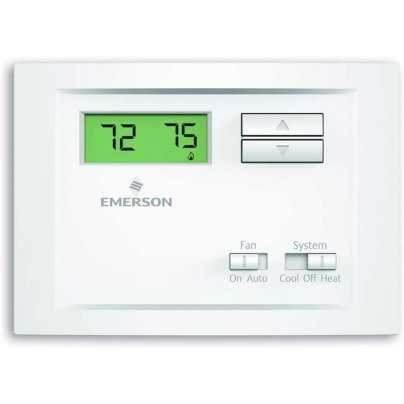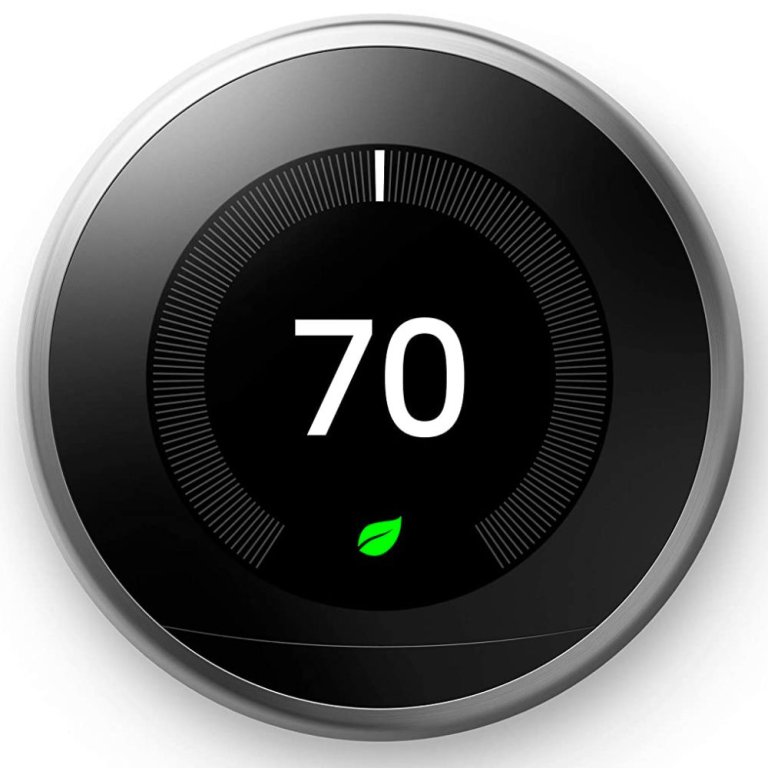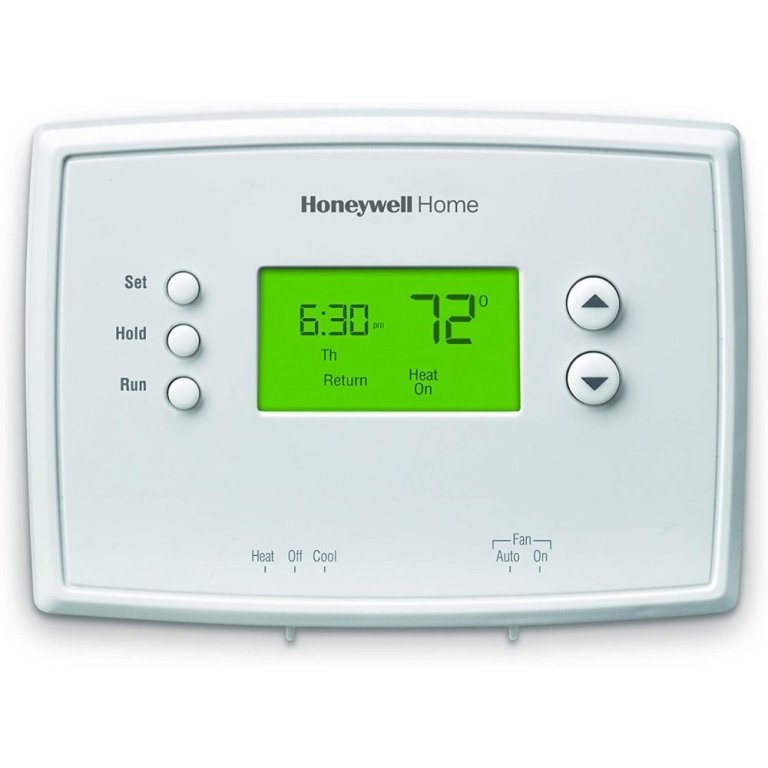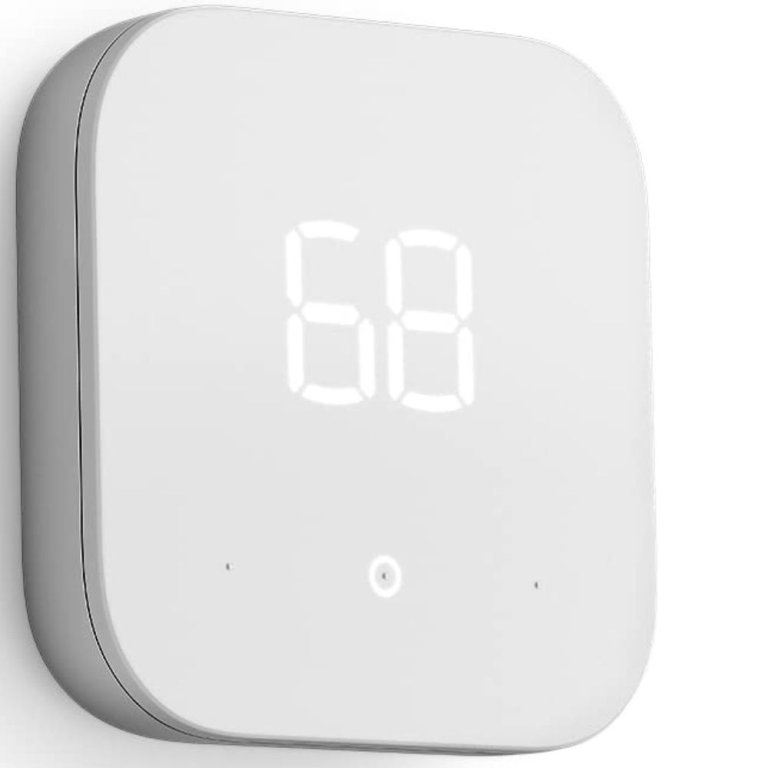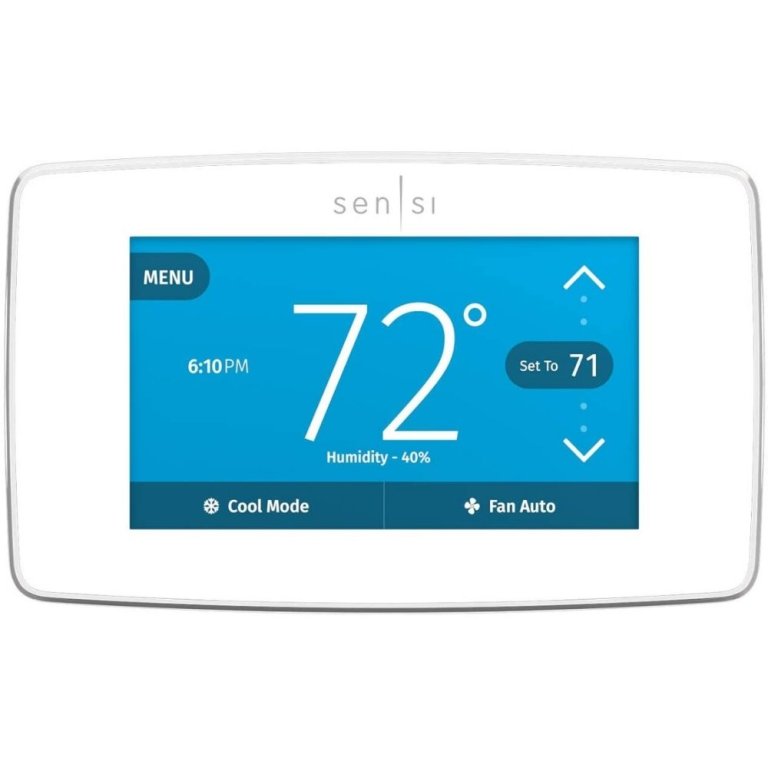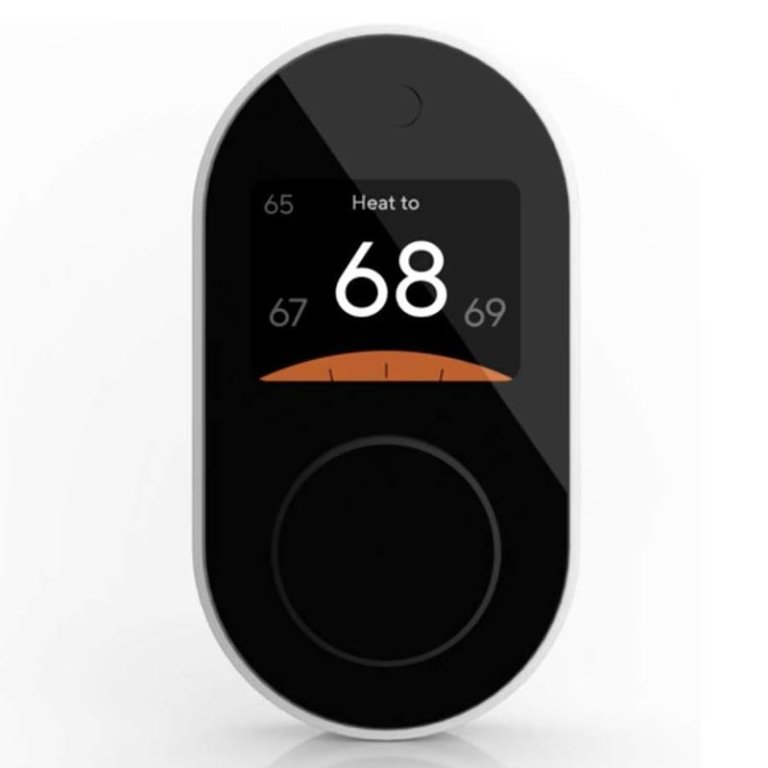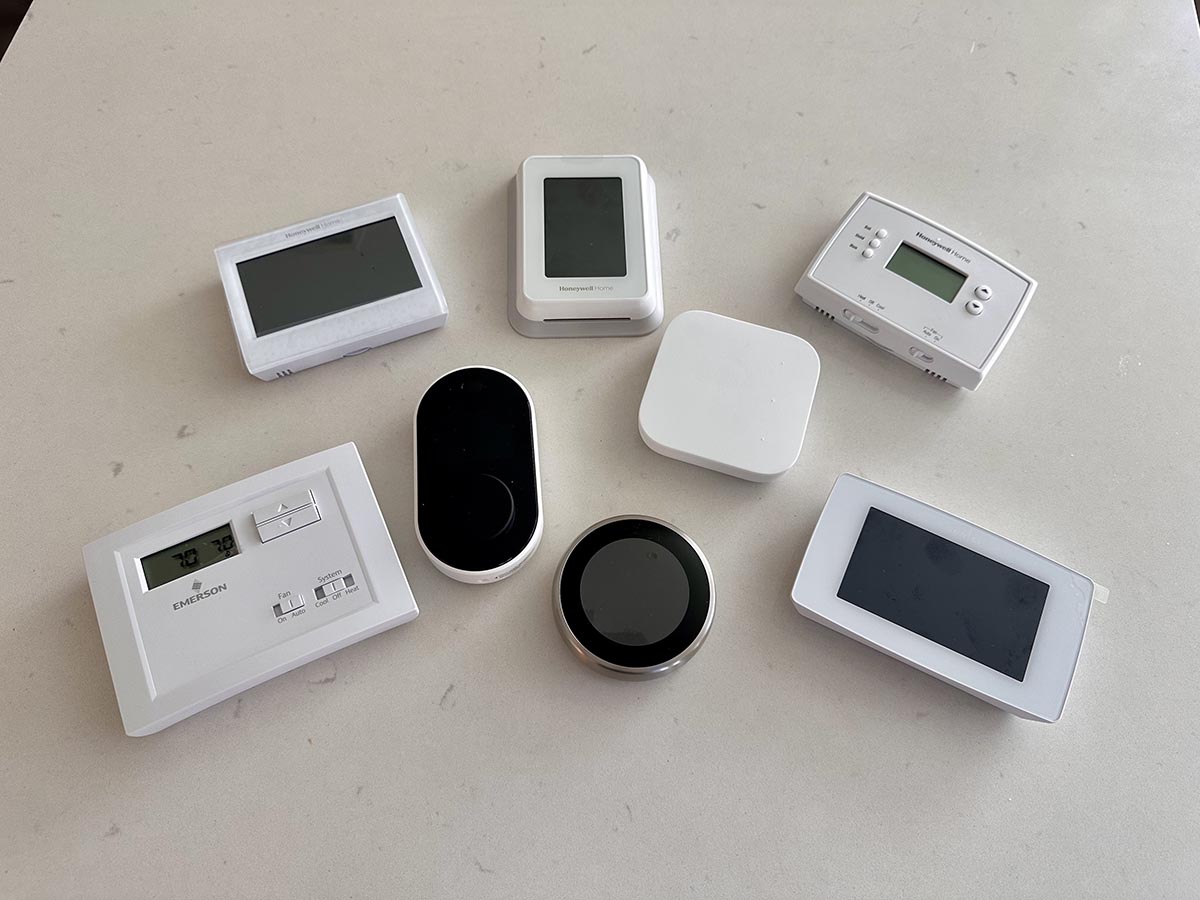
We may earn revenue from the products available on this page and participate in affiliate programs. Learn More ›
Home thermostats have come a long way from those early models with manual temperature dials that may or may not accurately reflect a room’s actual temperature. Today’s home thermostats are highly efficient. Many are programmable. Some even connect with smart-home systems for remote control via a smartphone app.
We decided to test a variety of home thermostats to see which ones were a step above the rest. Keep reading to discover why these models are among the best home thermostats on the market today and to learn which factors to consider when shopping for a new home thermostat.
- BEST OVERALL: Google Nest Learning Thermostat
- BEST BANG FOR THE BUCK: Honeywell Home 5-2 Day Programmable Thermostat
- BEST BASIC: Emerson Non-Programmable Single-Stage Thermostat
- BEST AFFORDABLE SMART: Amazon Smart Thermostat
- BEST PREMIUM SMART: Honeywell Home T9 Smart Thermostat With Sensor
- BEST TOUCH SCREEN: Emerson ST75W Sensi Touch Smart Thermostat
- BEST LARGE DISPLAY: Honeywell Home WiFi 9000 Color Touchscreen Thermostat
- ALSO CONSIDER: Wyze Smart Thermostat
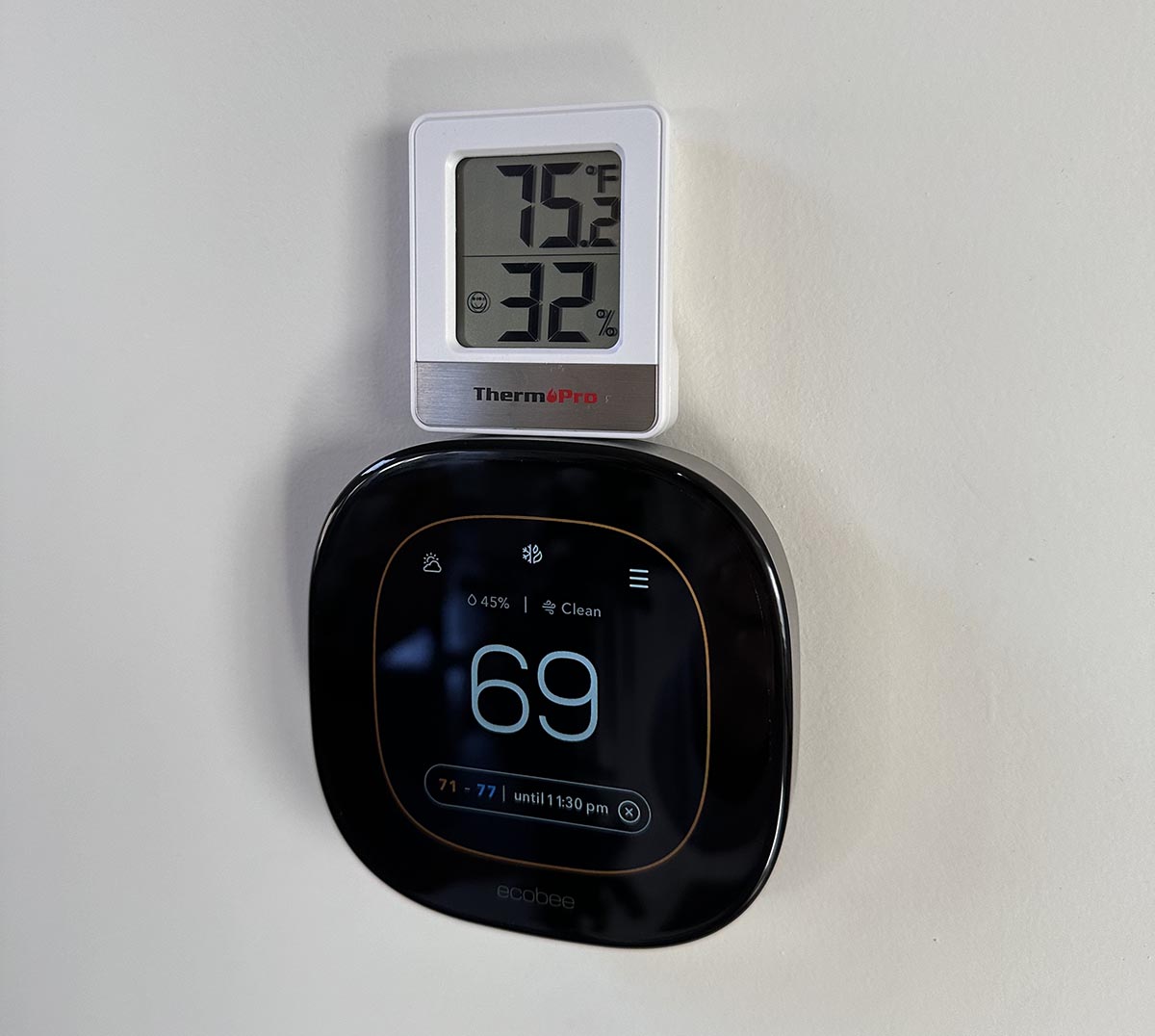
Before You Buy a Home Thermostat
Most shoppers want a home thermostat to have features that help save on utility costs without the device being too complicated. However, the criteria that determine the best home thermostats available today depend on shoppers’ varied wants and needs, according to Michael Morey, senior product manager of thermostats at HVAC manufacturer Trane Technologies based in Davidson, North Carolina. He notes, “The most popular thermostat features include Wi-Fi–enabled remote temperature and humidity control, custom programmable schedules, responsive touch screen with color display, fresh air ventilation control, HVAC system maintenance reminders/alerts, energy savings mode, and over-the-air upgradable software.”
How much a new home thermostat costs typically depends on whether it’s a manual, a programmable, or a smart thermostat. Manual thermostats are the most basic and least expensive models—as low as $20. They usually have an LED screen, a few room temperature buttons, a fan setting, and an AC switch that allows you to set the unit to cool in the summer and heat in the winter.
Choosing a programmable thermostat lets users set heating and cooling schedules based on activity, like having the heat automatically turn on at 6 a.m. on winter weekdays before everyone wakes up.
Smart thermostats allow you to adjust a home’s temperature via an app and include a wide range of features and functions, like occupancy sensing, geofencing, and smart-home integration. These thermostats can cost around $300 or more.
“Programmable thermostats often provide a very basic scheduling functionality, where a smart thermostat provides wider flexibility in scheduling, as well as the ability to make changes on the go,” explains Morey. “Some use geofencing to adjust the temperature when it senses that all a home’s occupants have left and readjust when the occupants are heading back home.”
How We Tested the Best Home Thermostats
We looked at 30 different home thermostats to narrow our choices down to the top models on our list. Our selections come from some of the best-known brands in thermostats and cover a broad range of price points, from basic digital models to premium smart thermostats.
We assessed each home thermostat by installing and using each one for about a week. During that testing period, we assessed how well they performed their basic function of controlling a home’s heating, ventilation, and air conditioning (HVAC) system and maintaining set temperatures. We also used and evaluated any additional features, including schedule programming and, if applicable, smart features like geofencing, auto-scheduling, smartphone apps, and any smart sensors included with the thermostat.
Best Overall
Google Nest Learning Thermostat
See ItWhat We Like
- Memorizes repeated temperature adjustments to automatically adjust temperature settings
- Includes geofencing to reduce energy waste by turning the thermostat down when the user is away
- Easy-to-read screen with large font and full-color, brightly lit display
What We Don’t Like
- Room sensors for certain additional features must be purchased separately
Product Specs
- Type: Smart
- Price: $$$
- C-wire: Required with some systems
This Bob Vila Approved product carries our brand’s highest level of recommendation.
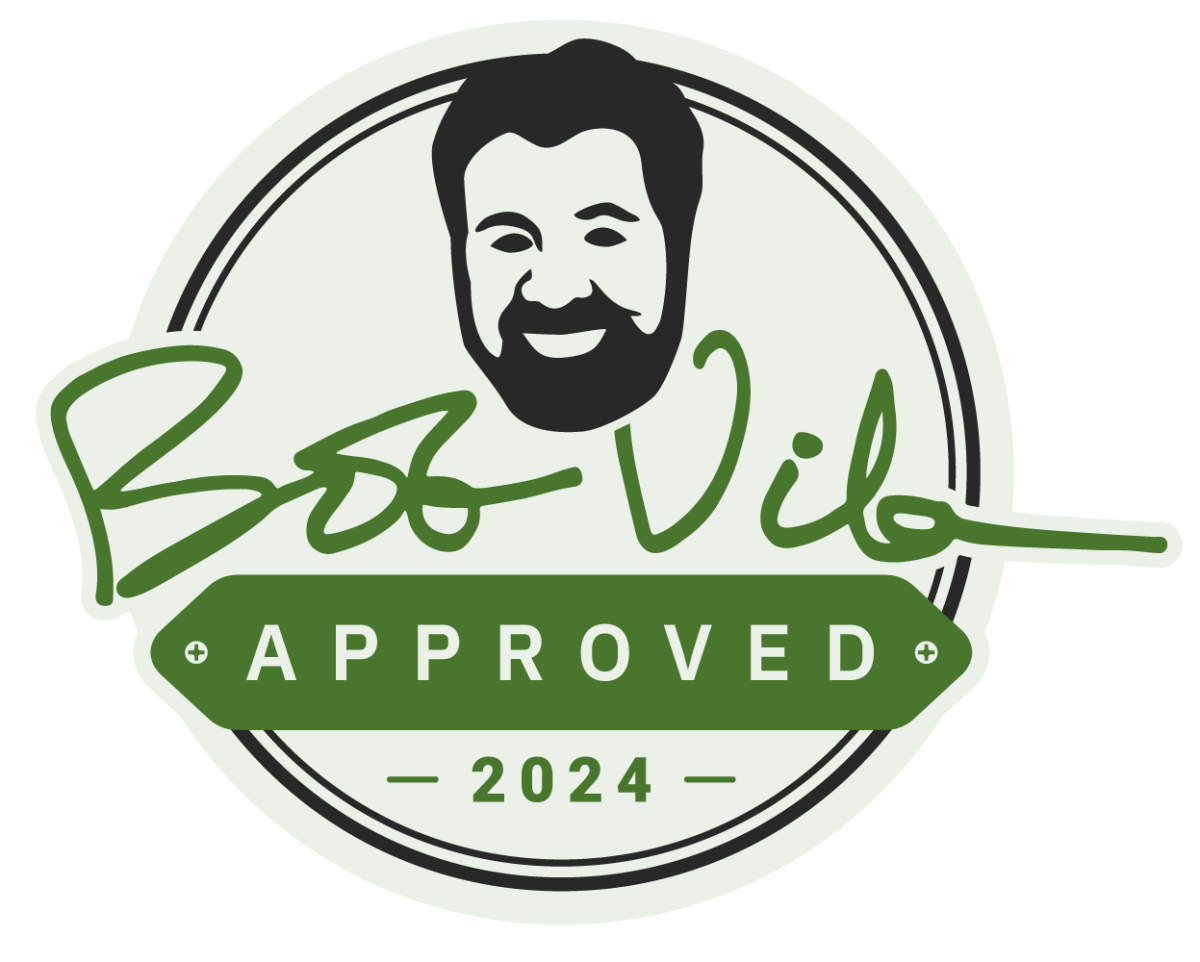
Bob Vila Approved recognizes the household and DIY products that impressed us most in our real-world testing and that exemplify core values of the Bob Vila brand, including craftsmanship, innovation, and value for the dollar. Winners of this designation come recommended by our professional review team and are personally approved by Bob Vila.
The Google Nest learning thermostat notes repetitive tasks—like when the room temperature is usually turned up or down—and adjusts the temperature automatically. It also includes geofencing to ensure the temperature is just right when occupants arrive home without wasting energy when the house is empty. A dial display shows the temperature in large digital numerals that are clearly visible from across a room. A blue backlight indicates the house is cooling; a red light shows it’s warming up. The Google Nest is compatible with Amazon Alexa and Google Assistant so users can activate the thermostat with voice commands.
We thought this model felt like a high-quality thermostat, thanks to its metal housing, full-color display, and impressive graphics. The Google Nest allows you to do more than most smart models via the dial interface of the thermostat, including setting schedules, changing display options, and reviewing detailed energy usage reports. We had no problem setting schedules directly from the thermostat or through the app.
The learning functions are one of the main draws, and they worked well during our week-long testing. The thermostat quickly picked up on our temperature habits and the times we were home and away, creating a schedule accordingly.
Our only real complaint was with the mounting base plate as the thermostat seemed to pop too easily off this plate.
Get the Google Nest Learning home thermostat at Amazon, Lowe’s, The Home Depot, or Best Buy.
Best Bang for the Buck
Honeywell Home 5-2 Day Programmable Thermostat
See ItWhat We Like
- 4 program periods per day with separate weekday and weekend schedules
- Precise temperature controls with easy-to-operate up and down arrows
- Retains memory of previously set temperatures in case of power outage
What We Don’t Like
- No Wi-Fi or smart-home capabilities
- Operates entirely off a battery
Product Specs
- Type: Programmable
- Price: $
- C-wire: Not required
No need to spend a lot of money to update an old thermostat to a new programmable model. The Honeywell Home 5-2 Day programmable thermostat offers weekday and weekend programming with up to four program changes per day, all at an affordable price. With a programmed daily schedule, this thermostat will save energy and money by running only when someone is home. Users further adjust the temperature with the press of a button on the thermostat.
While this thermostat is simple and lacks the bells and whistles of a smart thermostat, it kept accurate room temperatures throughout our week of testing. Installation does not require a C-wire, but it does require two AAA batteries (not included) to provide the additional power necessary to run the digital display.
The controls were among the easiest to operate of the models we tested, with up and down arrows for making adjustments to the thermostat and a hold button for locking in temperatures—a good choice if you don’t want the complexity that comes with a smart thermostat.
Setting schedules was also a fairly easy process, though it did require us to do a fair amount of repetitive button mashing to cycle through days and times. We did appreciate the backlit display, which made middle-of-the-night adjustments easier.
Shoppers looking for a budget-priced thermostat that still offers the ability to program schedules—or one that doesn’t require a C-wire—will find the Honeywell thermostat is a great option.
Get the Honeywell Home 5-2 Day home thermostat at Walmart.
Best Basic
Emerson Non-Programmable Single-Stage Thermostat
See ItWhat We Like
- Basic controls with clear labels make it simple to use
- Large backlit LED screen is easy to read, even in total darkness
- Display shows current temperature, set temperature, and mode
What We Don’t Like
- Offers only basic control functions with no ability to program a schedule
Product Specs
- Type: Non-programmable
- Price: $
- C-wire: Not required
If you’re searching for a basic thermostat, look no further than the Emerson Non-Programmable single-stage thermostat. One button raises the temperature and the other lowers it—from heating to cooling with a simple press of the finger.
This no-frills thermostat is well suited to users who want to set and change the temperature by themselves without the need for programs or a Wi-Fi connection. An easy-to-read LED screen shows the desired room temperature and the current temperature. It doesn’t require a C-wire: Just follow the installation instructions for a relatively simple DIY chore.
During our testing, this thermostat performed its basic job effectively: maintaining the room temperature at a consistent level. The controls are bare bones, but the thermostat does have a backlit display for making nighttime temperature adjustments.
For shoppers looking for a thermostat that does the absolute basics and nothing more, this is an ideal pick.
Get the Emerson home thermostat at Amazon or Lowe’s.
Best Affordable Smart
Amazon Smart Thermostat
See ItWhat We Like
- Able to program a 7-day heating and cooling schedule
- Monitor energy usage for HVAC systems via the Amazon Alexa app
- Compact size and minimalist style give it an attractive modern look
- Automatically changes thermostat settings by sensing when the home is empty
What We Don’t Like
- Display shows a limited amount of information
Product Specs
- Type: Smart
- Price: $$
- C-wire: Optional
The Amazon smart thermostat doesn’t take up much room, but it still offers high-end smart features. Users can set this programmable thermostat through the touch screen. It offers voice control through select smart-home devices and the Amazon Alexa app and adjusts the temperature based on user preferences to reduce energy usage.
We loved how easy this thermostat was to use. By simply clicking on Climate and the thermostat you want to control in the app, you’re presented with full-screen, color-coded controls that include a slider for adjusting the temperature or heat and cool settings if you have the thermostat set to Auto.
During our testing, we used voice commands to change the temperature or set a schedule via our Echo Show device and found it easy to create and manage a 7-day temperature schedule. A key feature allows Amazon Alexa to automatically change the thermostat settings based on the “hunches” it has about whether the user is home, away, or asleep based on the location of their phone and how they interact with the home’s Alexa devices.
For eco-conscious users, the Amazon thermostat offers energy-tracking features that estimate how much energy the HVAC system is consuming each day. However, while we liked this feature, we wondered about the accuracy of the measurements.
This thermostat features a sleek minimalist appearance that mimics the look of the Amazon Echo Dot. Yet, it still has a large digital display to allow users to easily see the temperature, even from across the room.
Get the Amazon home thermostat at Amazon.
Best Premium Smart
Honeywell Home T9 Smart Thermostat With Sensor
See ItWhat We Like
- Preset heating and cooling schedule with geofencing and motion-sensing features
- Works with digital assistants Amazon Alexa, Google Assistant, and Samsung SmartThings
- Streamlined look and compact size make it less conspicuous than other smart thermostats
What We Don’t Like
- Requires a C-wire and a home Wi-Fi network
Product Specs
- Type: Smart
- Price: $$$
- C-wire: Required
Like the Amazon smart thermostat, the Honeywell Home T9 smart thermostat also won’t take up much room while delivering high-end smart features. Geofencing and motion-sensing capabilities adjust the temperature when no one is home, saving energy and money. The individual sensor helps further adapt heating and cooling to the user’s needs throughout the whole home.
This thermostat follows a preset heating and cooling schedule and learns your routine. It integrates with several digital assistants, including Amazon Alexa, Google Assistant, and Samsung SmartThings, to offer remote or voice control of the HVAC system. A C-wire and a home Wi-Fi network are required for installation.
This thermostat proved to be both accurate and intuitive during our testing. The large full-color display shows the set temperature, the humidity, and the current temperature. We loved the touch screen, which made it easy to change both cool and hot target temperatures via the thermostat itself.
We also liked the design of Honeywell’s smart room sensors, a feature that can be a mystery to use on other smart thermostats we tested. There’s no wondering what the thermostat is using to set the temperature with the Honeywell. It allows you to select which sensor you want the thermostat to prioritize, which proved to be a great feature to boost the temperature in our cold bonus room.
Honeywell’s app is easy to use for setting a schedule or making quick changes to the thermostat. The geofencing feature also worked well, auto adjusting the temperature whenever we strayed more than 2 miles from home.
Get the Honeywell Home T9 home thermostat at Lowe’s, The Home Depot, or Best Buy.
Best Touch-Screen
Emerson ST75W Sensi Touch Smart Thermostat
See ItWhat We Like
- Large full-color touch screen is easy to read from across the room
- Works with digital assistants Amazon Alexa, Samsung SmartThings, and Apple HomeKit
- Generates HVAC energy usage reports viewable via the Sensi app
What We Don’t Like
- Requires a C-wire and a home Wi-Fi network
Product Specs
- Type: Smart
- Price: $$$
- C-wire: Required
If you’re looking for both on-screen and remote thermostat control, the Emerson Sensi Touch smart thermostat might be your top pick. Users can check the temperature at a glance and make adjustments—like changing the temperature, switching between heating and cooling modes, and toggling the fan controls—with the tap of a finger on the large touch screen.
During our testing, we noted that the large bright display was easy to read, even from far across the room. The display also provides a bevy of information, changing the background color to orange if it’s heating or blue if it’s cooling and displaying the current time and humidity.
In terms of smart controls, we found the app simple to use to adjust temperatures or program weekly schedules. We also liked the ability to set alerts if the humidity or temperature rose out of a preset range, a feature we didn’t find on other smart thermostats. Like other smart thermostats, the Emerson Sensi Touch integrates with digital assistants, including Amazon Alexa, Samsung SmartThings, and Apple HomeKit.
This model monitors heating and cooling patterns to generate energy usage reports. It also uses geofencing technology that will trigger the thermostat to change settings automatically when you travel more than 3 miles from home, a feature that worked well during testing.
Get the Emerson home thermostat at Amazon or The Home Depot.
Best Large Display
Honeywell Home WiFi 9000 Color Touchscreen Thermostat
See ItWhat We Like
- Full-color display shows both indoor and outdoor temperature and humidity
- Program a 7-day schedule and view weather forecasts via the app
- Energy-saving mode optimizes HVAC operation to save money
What We Don’t Like
- Does not offer a geofencing feature or vacation mode
Product Specs
- Type: Wi-Fi
- Price: $$$
- C-wire: Required
You will easily be able to see the temperature from across the room via the large digital display on the Honeywell Wi-Fi programmable thermostat. The full-color display also shows the date, day, time, outdoor temperature, and indoor and outdoor humidity levels.
During our week of testing, we programmed this smart thermostat to follow a 7-day schedule, which we could do either directly on the display or through the intuitive and easy-to-use app. We could also select an optional energy-saving mode to reduce electricity costs.
The Honeywell thermostat syncs with digital assistants, including Google Home and Amazon Alexa. A C-wire and a home Wi-Fi network are required to operate the thermostat.
We liked the tabs on the touch screen that made it easy to access various settings, set schedules, and even view a weather forecast all with the touch of a finger. You can even change the color scheme on the thermostat.
While we liked this Honeywell smart thermostat, we were disappointed that it lacked key features that are common on most smart thermostats at this price point, namely geofencing functionality and a vacation mode.
Get the Honeywell Home Wi-Fi 9000 home thermostat at Amazon.
Also Consider
Wyze Smart Thermostat
See ItWhat We Like
- Loaded with features that help to reduce energy costs
- Large easy-to-read display and novel dial interface
- App allows for 7-day scheduling with customizable comfort settings
- Works with digital assistants, including Amazon Alexa and Google Home
What We Don’t Like
- Display only comes on when the user is close to it
Product Specs
- Type: Wi-Fi
- Price: $$
- C-wire: Required
Shoppers searching for an affordable smart thermostat will want to consider this model from Wyze. As with other smart thermostats, it allows the user to access and control the temperature from virtually anywhere via the app. You can set 7-day scheduling and temperature settings for home, sleep, and away modes. The thermostat also works with digital voice assistants, including Amazon Alexa and Google Assistant.
Our testing revealed several novel features. We liked the dial controls that allowed us to change the temperature with a flick of the wrist by turning the knob on its front. This throwback to thermostats that predate digital models makes it easy to control for users who may not like the newer touch screens. The thermostat can send notifications should the temperature go too high or low and will even track energy usage and offer suggestions for cutting costs.
The thermostat also reduces the amount of energy it uses with a motion detector that only turns the display on when someone passes within a few feet of it. While we liked the idea behind this feature, we couldn’t read the thermostat unless we were standing in front of it. Overall, the Wyze thermostat is a great smart option at a reasonable price.
Get the Wyze home thermostat at Walmart or Amazon.
ALSO TESTED
Ecobee Premium Smart Thermostat
The Ecobee Premium Smart Thermostat claims that it will take keeping your home at the optimal temperature to the next level. We did like the interface and app. However, the Ecobee failed to deliver on the extras that are supposed to separate it from more affordable smart thermostats. We were most excited about the sensor that provides air quality reports. However, the thermostat was attempting to calibrate the air quality sensor during the entire testing period—a process that the manual notes should only take 24 hours. More importantly, our testing revealed significant issues with controlling gas furnace temperature: The Ecobee routinely heated the room to 3 to 4 degrees Fahrenheit above the set temperature before finally cutting it off (we verified the actual room temperature through the use of two independent room thermometers). Given these problems and the steep price tag, we’d be hard-pressed to recommend this model.
Jump to Our Top Picks
What to Consider When Choosing a Home Thermostat
While you might be tempted to run out and buy a smart thermostat that promises energy efficiency, don’t pull out the credit card until you’re sure it’s the right pick for your home. The best home thermostats are compatible with an existing heating and cooling system, offer features to make life simpler, and fit within your budget, which includes allowing for professional installation costs if necessary.
HVAC System
When it comes to choosing the best home thermostat, one size does not fit all. Some thermostats only control heat; some only control cooling, and some control both. The type of thermostat required depends on the HVAC system in the home. To determine the type of thermostat their home needs, shoppers will want to remember:
- Separate heating and cooling systems require two separate thermostats.
- A zoned HVAC system requires a zone-enabled thermostat.
- A home with a heat pump or a multistage heating system requires a type-specific thermostat.
- Some new thermostats are compatible with mini-split systems and even window air conditioning units.
Sensors
Smart thermostats may require users to place sensors in various rooms around the home to sense activity, monitor the temperature, and adjust the heating and cooling accordingly. While they add to a thermostat’s expense, Morey says they’re worth it. “Many of the latest smart thermostats offer remote temperature and humidity sensors that can be placed throughout the home,” he explains. “The thermostat can wirelessly connect to these sensors and control the temperature in a home in a way that keeps your comfort consistent throughout the home.” When any of these factors change or deviate from the norm, the sensor will trigger the thermostat to send an alert to the user’s smartphone.
Display and Controls
The best home thermostat is easy to see and program. These days, many manual and programmable thermostats feature large LED screen displays and easy-to-follow prompts. These prompts help the user set the room temperature and program a custom heating and cooling schedule directly through the thermostat.
While you can set some smart thermostats much the same way as the manual and programmable varieties, their programming capabilities can be a bit more limited. Many smart thermostats are built with a small screen and require you to program them via an app that you must download and access through a smartphone, tablet, or PC.
Installation
Replacing an existing manual or programmable thermostat with a new manual or programmable model is relatively simple: The existing wires simply connect to the new thermostat. Installing this type of thermostat is often a DIY project.
Replacing an existing smart thermostat with a new one may also be a DIY project. However, if a C-wire is not available, running a new one is typically a job for an electrician. Installing the smart thermostat is only the first part of the task. Next, the user must download an app and follow the prompts to connect the thermostat to the home’s Wi-Fi network. Most of the time, this is relatively simple with a basic knowledge of routers and networks.
Aesthetic
Thermostats were always meant to be functional, not decorative. While many basic models that lean more toward functionality are still available today, a lot has changed over the years in terms of aesthetics. These days, many thermostats have sleek digital display screens that look more appealing than their older counterparts. Some allow users to download a chosen background image onto the display. Most are low profile, so they don’t stick out far from the wall. A few newer models are even designed for recessing in a wall stud space, making the front of the screen nearly flush with the wall’s surface for a sleek, clean look.
FAQs
Before upgrading to a new thermostat, many shoppers often have questions about which option they should choose. While some would rather stick to a functional, manual thermostat, others interested in creating cooling and heating schedules want to know more about programmable and smart options. Here are a few of the most frequently asked questions and their answers about the latest thermostats.
Probably, but some additional wiring may be required to install a smart thermostat if the home is more than 5 to 10 years old.
A smart thermostat connects to your home’s Wi-Fi network to relay information and allows you to control the HVAC system remotely or by voice commands.
Yes. Smart thermostats must connect to the Wi-Fi in a home so they can communicate with a smartphone.
Programmable thermostats can be smart or nonsmart. Select one that can schedule at least 7 days of heating and cooling and lets you override the schedule by adjusting the temperature.
Yes, if your home already has a C-wire installed. If your home doesn’t have a C-wire, a professional must install one first.
The features that make the thermostat “smart” (like geofencing and smartphone app control) won’t work when the internet is out, but you can still control the thermostat manually.
Meet the Tester
Tony Carrick is a freelance writer specializing in home improvement, landscaping, technology, home security, and design. His articles have been featured on such sites as Angi, Popular Science, Futurism, 360 Reviews by U.S. News & World Report, Domino, and more. Carrick has conducted rigorous product testing on everything from power tools to home security systems to backyard grills. With each review, his goal is to help readers determine whether a product meets their needs and if it is or isn’t worth its price tag.
Additional research provided by Glenda Taylor.


